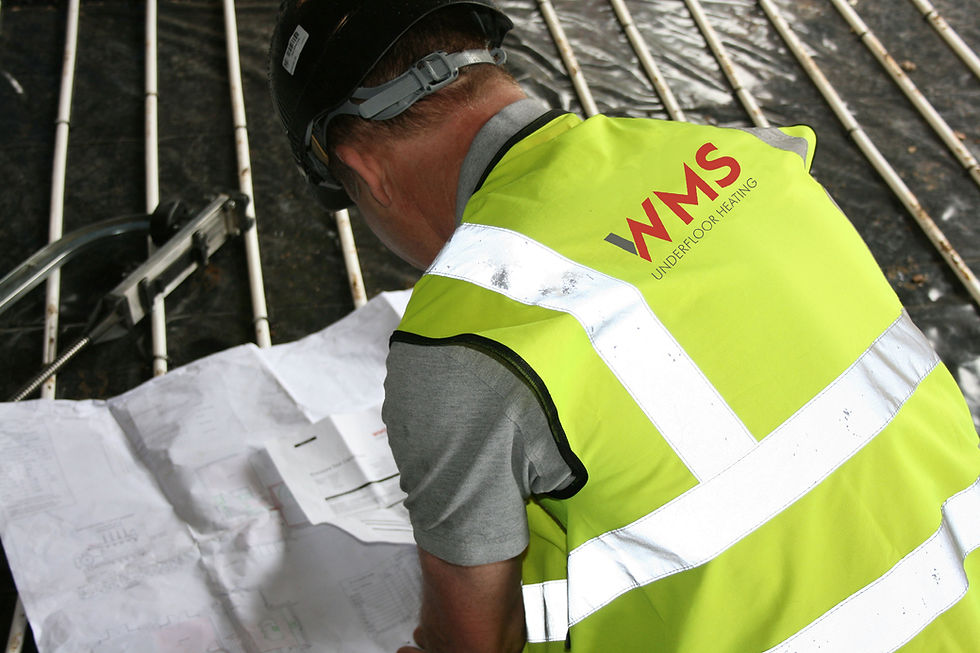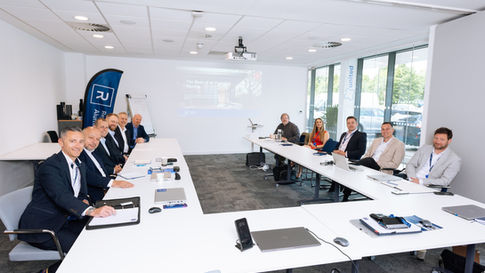Ashley Cooper, Managing Director at WMS, explains the science behind specifying a radiant heating system to ensure good indoor air quality and explores how the same system, paired with a heat pump, can deliver cooling to meet the latest regulations.
Ensuring good indoor air quality (IAQ) in UK homes has become increasingly important. To comply with the latest building regulations, new homes in the UK are being designed increasingly to be energy efficient, with more insulation and airtight construction to limit heat loss.
Poor IAQ can significantly affect a person’s health, leading to respiratory issues, allergies, and other health problems. Underfloor heating offers a great way to ensure good indoor air quality within the very fabric of the building.

Underfloor heating circulates warm water through a series of continuous loops fitted under a floor, creating a large radiant surface that heats a room from the floor upwards. Thanks to this radiant transfer of heat, underfloor heating eliminates air – and dust, allergen and pollutants – movement from the system as it heats the fabric of a room and doesn’t use air as a medium to transport heat. The nature of underfloor heating also ensures a more stable and consistent temperature, which aids in regulating humidity levels. This important factor creates thermal comfort and a healthier indoor environment through radiant heat.
As heat radiates from the whole floor surface, another added health benefit is the prevention of cold spots within a room where mould could develop. Mould not only adds to property maintenance requirements but also exacerbates respiratory conditions, so underfloor heating ticks all the right boxes when it comes to creating healthy living environments.
Exploring underfloor cooling
Part O of the building regulations, which took effect in England in June 2022, are designed to mitigate the risk of overheating in new residential buildings by limiting unwanted solar gains and providing a means to remove excess heat. The regulation focuses on passive design strategies such as shading and glazing orientation to prevent overheating in the first instance, but also allows for active cooling systems like underfloor cooling.
This emerging solution is made possible when an underfloor heating system is paired with a heat pump that can run in reverse to offer a passive or near-passive means of heat removal. Other than the specification of a control system designed for cooling as well as heating, this low-carbon, radiant cooling solution requires no additional or special components.
Radiant cooling systems circulate cool water through the underfloor heating pipes embedded in the floor – whether in the screed or within a panel system – to lower its temperature. So, in contrast to forced air cooling options, this silent running system uses the cool surface of the floor slab to remove the heat radiated from objects within the room.
In our latest research paper, ‘UFH? That’s Cool’, we explore our findings in greater detail regarding the potential of UFH systems to assist the industry in complying with Part O of the building regulations.
Staying ahead of the regs
As the industry adapts to the many regulatory changes being put in place and prepares for the additional challenges ahead, it is critical to take a proactive approach to ensuring compliance and system performance. It’s never been more important for heating systems to be correctly specified and controlled to maximise comfort and efficiency while minimising running costs.
Determined to support the industry, we’ve recently updated our existing CPD module, which outlines the wide-ranging benefits that underfloor heating systems can bring to housebuilders and homeowners alike. The module details how radiant heating and cooling can ensure compliance with the new building regulations Part O and the low-temperature update to Part L, introduced in 2022.
.png)








































.png)










